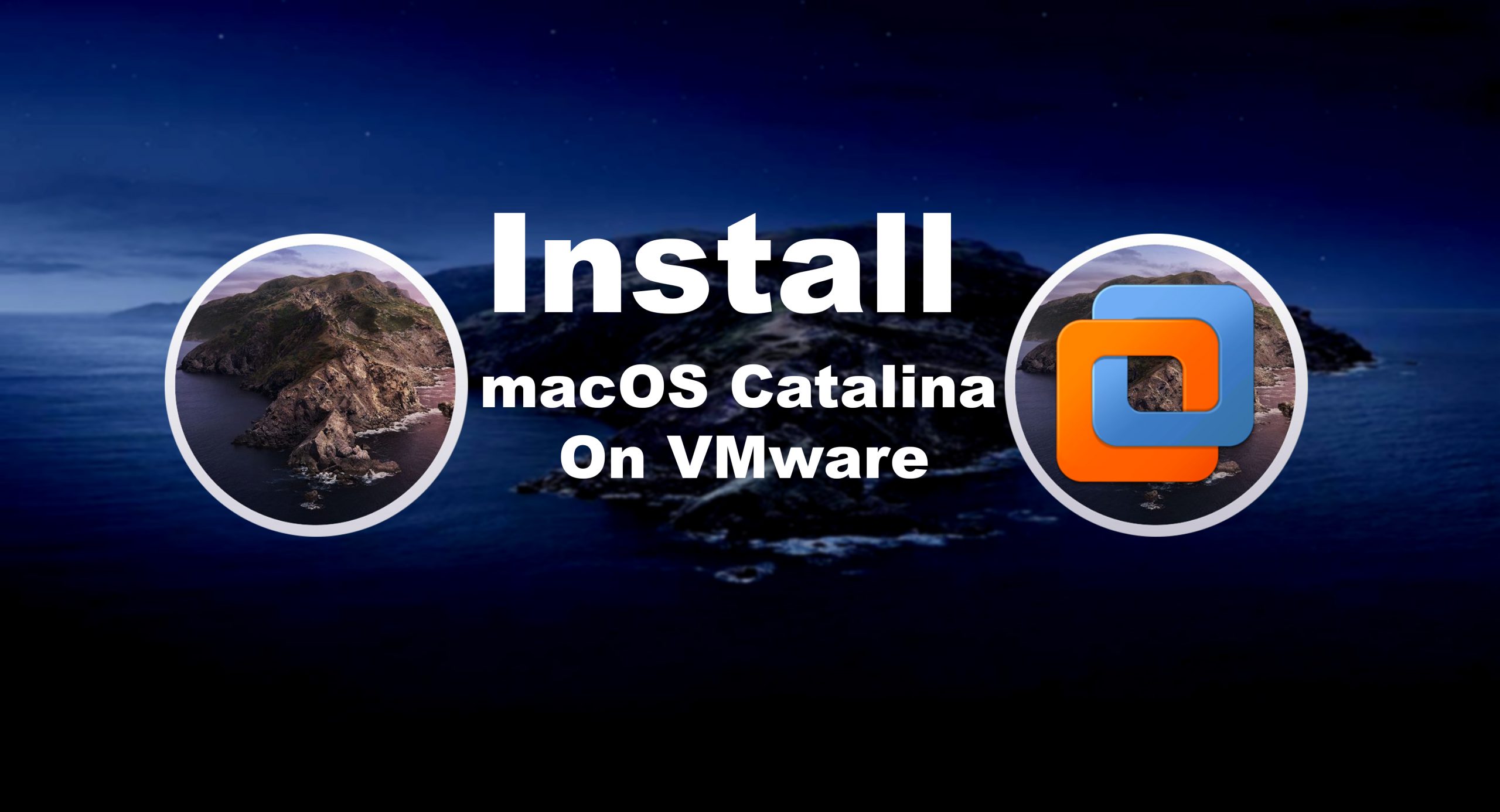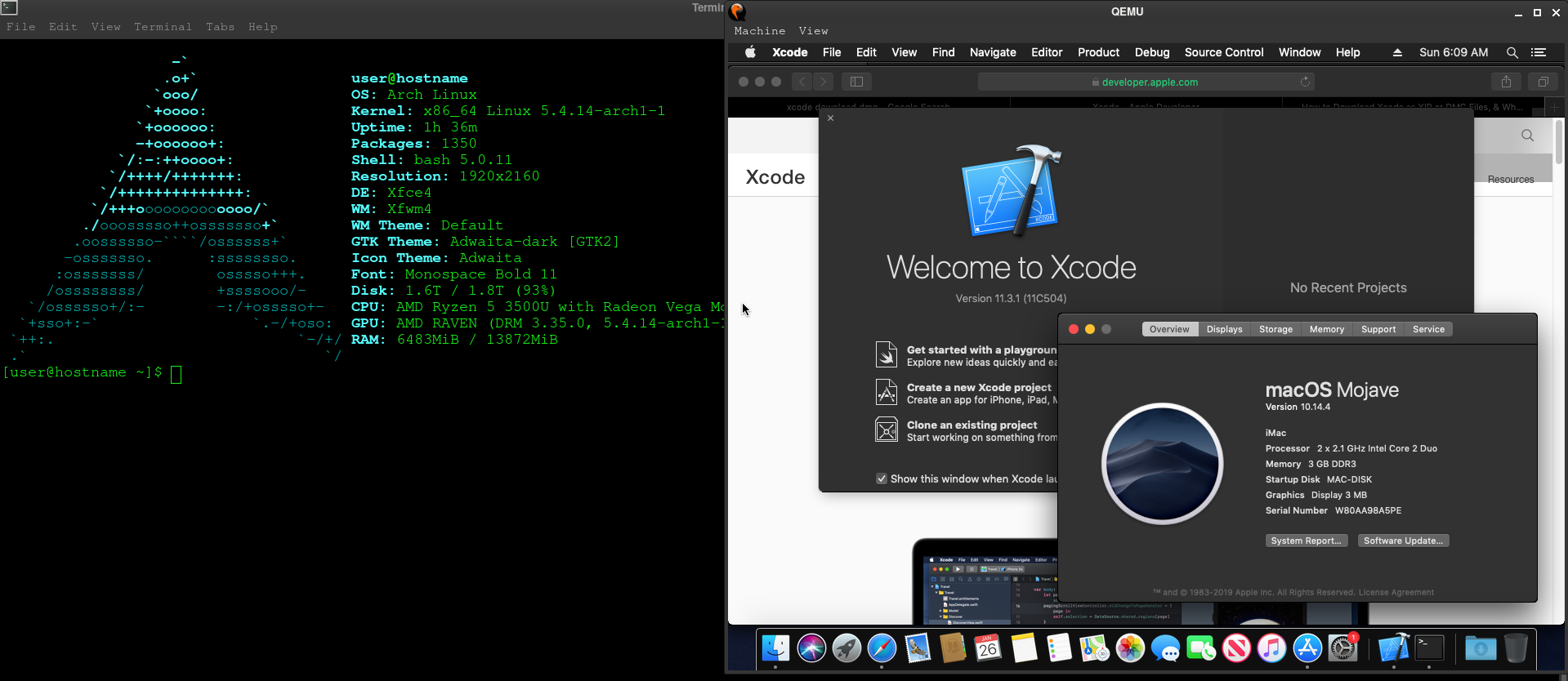Download Mac OS Catalina 10.15 VMDK File Image: Most of Peoples Love Mac Operating System Just Because of Looks, Performance, Customization, and Lost of Feature Which Make Mac Os Stunning but Lots of Peoples Can Afford Macbook That's Why They Want to Use Mac Os in Windows Based Laptop or Desktop You Can Easily Feel Mac Os Environment in Your. Install macOS Catalina on VMware on Windows PC Install macOS Catalina on VirtualBox. While VirtualBox is an undeniable rival and well-known competitor of VMWare Workstation, it also functions and works super easy super powerful, which makes it the favorite virtual machine app that is completely free to use. This exercise was to get a running MacOS Catalina VM instance running on VMware. I first wrote this for Catalina Beta but afte rthe official release, a couple things changed. So now it is how to install Catalina on ESXi 6.7. I am using a 2013 Mac Pro with VMWare 6.7 U2 installed. I have High Sierra and Mojave VMs running on the host.
Until now, most who are interested in macOS might have known everything or at least heard about the next version of macOS. The macOS Catalina is one of the most up running operating systems which has the most advanced features and update apps. This new version of the operating system which is recently out in July 2019 does everything in a quick, easy, and fairway.
In addition to Mac users who are enthusiastic about macOS, Windows users are also interested in macOS. Now without any use, there’s no benefit of their interest. With this in mind, they’ve found a working way to install macOS on Windows. The installation is process is shown by us and we’ve also shared the file.
With that, there are countless of Windows users running macOS on virtual machines such as VMware Workstation or VirtualBox. But after installation, pretty much most of the users have informed us of the features not working problem such as iMessage, iCloud, and App Store. In this article, I’ll show how to fix macOS Catalina iMessage, iCloud, and App Store problem on VMware on Windows PC.
Every time Apple announces a new operating system, Apple also reveals new awesome unique features with it such as Dark Mode. The Dark mode is one of the highlighted features in the new macOS Catalina. There are also a bunch of other features such as iCloud Drive folder sharing, Screen Time, Apple Music time-synced lyrics view, and more. You can also experience your favorite iPad apps now on your Mac. The update also improves the performance, quality, and security of your Mac.

Something else which you may notice is no more iTunes. That is the shifted with three different apps so now we have separate Apple Music, Apple TV, and Apple Podcasts. And use Finder for some of the other functions, for example, syncing iPhone. Around that, Apple has also updated its existing features such as iMessage, iCloud, App Store and more.
System Definitions
- iMac 13,2
board-id = “Mac-FC02E91DDD3FA6A4”
hw.model.reflectHost = “FALSE”
hw.model = “iMac13,2”
serialNumber.reflectHost = “FALSE”
serialNumber = “C02H82KLDNCW”
smbios.reflectHost = “FALSE”
efi.nvram.var.ROM.reflectHost = “FALSE”
efi.nvram.var.MLB.reflectHost = “FALSE”
efi.nvram.var.ROM = “3c0754a2f9be” - iMac 14,2
board-id = “Mac-27ADBB7B4CEE8E61”
hw.model.reflectHost = “FALSE”
hw.model = “iMac14,2”
serialNumber.reflectHost = “FALSE”
serialNumber = “C02KP7A9F8JC”
smbios.reflectHost = “FALSE”
efi.nvram.var.ROM.reflectHost = “FALSE”
efi.nvram.var.MLB.reflectHost = “FALSE”
efi.nvram.var.ROM = “3c0754a2f9be” - iMac 18,3
board-id = “Mac-BE088AF8C5EB4FA2”
hw.model.reflectHost = “FALSE”
hw.model = “iMac18,3”
serialNumber.reflectHost = “FALSE”
serialNumber = “C02TC4YKJ1GJ”
smbios.reflectHost = “FALSE”
efi.nvram.var.ROM.reflectHost = “FALSE”
efi.nvram.var.MLB.reflectHost = “FALSE”
efi.nvram.var.ROM = “3c0754a2f9be” - MacBook Pro 14,3
board-id = “Mac-551B86E5744E2388”
hw.model.reflectHost = “FALSE”
hw.model = “MacBookPro14,3”
serialNumber.reflectHost = “FALSE”
serialNumber = “C02TX2EZHTD5”
smbios.reflectHost = “FALSE”
efi.nvram.var.ROM.reflectHost = “FALSE”
efi.nvram.var.MLB.reflectHost = “FALSE”
efi.nvram.var.ROM = “3c0754a2f9be”
Once added the system definition to the macOS Catalina vmx then press Ctrl + S to save the file.
After restart, the problem will be no more longer there so enjoy. But if this method doesn’t work or you couldn’t accomplish with this method or want another method so take a look at another step below.
Next Fix: Fix macOS Catalina iMessage, iCloud, App Store on VMware & VirtualBox
This solution is if the first fix didn’t work so proceed with this. Remember not to skip the first method and directly head to this step. This is only if the first step didn’t work.
To fix, download the latest version of Clover Configurator. Once installed, open it and click on SMBIOS on the left and then click on the top and bottom of the arrow shown in the image below. After selecting the macOS version (iMac 18,3, MacBook Pro 14,2) and then click “Generate New”. It will produce a new series to define the system you have chosen.
Generate New Serial Number for MacOS
By creating a new serial number, replace it with the old serial number in the macOS Catalina.vmx file. Be sure not to change somewhere else and only make this change. Other changes make break machine.
Fix Apps Not Opening on macOS Catalina
If you received an error message while opening Clover Configurator or any other program, click Ok to close the error window.
Clover-Configurator Not Open
Open Preferences> Security & Privacy.
Click the Allow or Open button anyway and open the app.
That was the method I did to fix iMessage and iCloud and App Store on VMware. I recommend using the first method first. If it didn’t work, try for the next one. In the final fix, I’ve shown and fixed the problem of not opening apps which requires some permission. I’ve also done allowing third-party apps in a separate tutorial.
That should do the thing. If it didn’t, put out the error in the comments form.
I have bought a new laptop to replace the old one – Sony VAIO E VPCEG23 11 years old, It’s ASUS Zenbook UM425IA from newegg.com, but wait, the AMD laptop. Yeah, it’s AMD Ryzen 7 4700U with Radeon Graphics Vega 7.
This is my new laptop specìication:

- ASUS Zenbook UM425IA-NH74
- AMD Ryzen 7 4700U Processor (8M Cache, up to 4.1 GHz)
- 1 TB PCIe NVMe Intel SSD
- 16 GB LPDDR4X RAM Dual chanel
- Windows 10 Professional included
- HDMI, USB Type C, Wi-Fi 6 (802.11ax), Bluetooth 5.0
- USB 3.2 Type A, USB 3.2 Type C and Micro SD card reader
- USB-A to RJ45 ethernet adapter and USB-C to Audio Jack dongle
And this guide is a Personal experiment about how to setup the Fresh MacOS on the Laptop AMD with Windows 10 host.
VMware’s graphics acceleration not being compatible with macOS, you will not have any graphics acceleration in your virtual machine.
Prerequisites

- CPU also needs to support the SSE4.1 and AMD-V
- VMware Player /Workstation Pro 15 or higher
- VMware Unlocker: https://github.com/DrDonk/unlocker
Configure the VMWare
- Install the VMWare as your way, either Player or Workstation will be fine.
- Run the Unlocker by running the
win-install.cmdwith Administrator right. - Open VMWare, create a new VM, Select
Apple Mac OS Xunder Guest operating system and choose 'macOS 10.15' under Version. Leave all the option to the default. We will update the Hard Disk later. - Click on Finish once finished.
- Update the Hard Disk by Click on Edit virtual machine settings.
- Add a new Hard Disk by click on Add.. -> Hard Disk
- Select SATA -> Use an existing virtual disk
- Click on Ok when Finished.
How To Install Mac Os X Catalina Vmware
Installation MacOS
Start the virtual machine.
The language prompt will come up. Select your language and continue.
Osx Catalina Vmware Image
Select 'Disk Utility' and press 'Continue'.
Select 'VMware Virtual SATA Hard Drive Media' under 'Internal' hard drive.
Select 'Erase' in Disk Utility. Name the drive 'Catalina'. Change 'Format' to APFS and press 'Erase'. Press 'Done' and close Disk Utility.
Select 'Reinstall macOS' and press 'Continue'.
When the installer opens, press 'Continue'.
Agree to the terms and conditions. Select the hard drive that we erased earlier with Disk Utility and press 'Install'. Sit back and let it install.
The CPU has been disabled by the guest operating system. Power off or reset the virtual machine.
Edit the vmx file by adding the following line to the bottom of the vmx file:
Back to the BIOS, Select 'EFI VMware Virtual SATA Hard Drive (2.0)' and press enter. This is our Catalina installer that we are booting.
Once the installer has booted, click on 'Utilities' in the Finder bar and select 'Terminal'.
Type this command in Terminal (replacing 'Catalina' with whatever you named your hard drive earlier):
With that command, we coppy all the prelinkedkenel under the installation source CatalinaAMD/Volumes/CatalinaAMD/System/Library/PrelinkedKernels/prelinkedkernel to the Hark Disk Catalina /Volumes/Catalina/macOS Install Data/Locked Files/Boot Files/
After execute the command, restart the VM again. The Catalina installation process will be continued:
If the VM restarts and you get a ‘CPU is disabled’ error, close the error window, attempt to close the VM window, select ‘Power Off’ and reopen VMware.
Reboot the VM back into the BIOS, select the installer and open Terminal once again. Time to do the post-install commands. (replacing 'Catalina' with whatever you named your hard drive earlier):
You may get errors, Ignore those errors, the prelinkedkernel should still rebuild just fine.
Close Terminal and reboot into your hard drive. The VM should boot into the setup now. Go through the setup process but DO NOT SIGN IN WITH YOUR APPLE ID, choose 'Set Up Later'.
The setup almost be done. Do your best 😀
=> Upgrade to the Big Sur
Nam Le,
Personal experiment with https://amd-vm.hackintosh-guides.ml/
Last modified on August 6th, 2021 at 3:37 pm
Nam Le
lequocnam